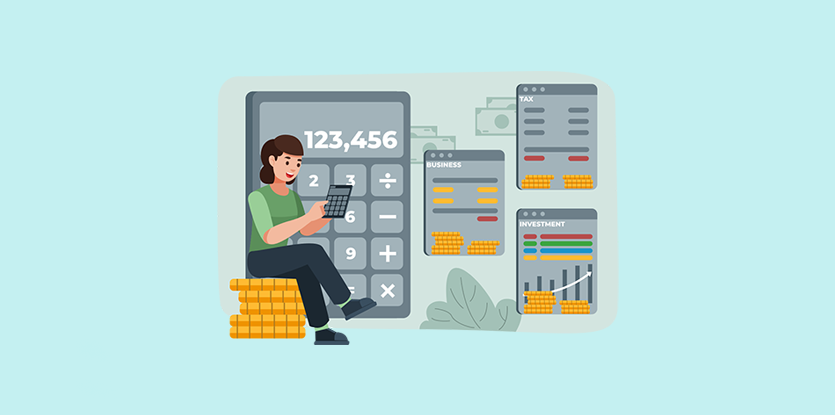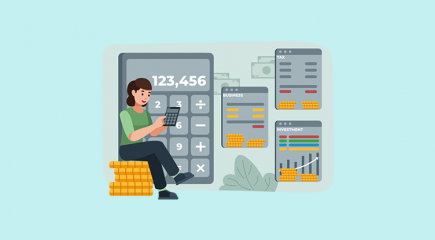The dividend payout ratio is a financial ratio that serves as the percentage of revenue that the firm has paid to the shareholders or owners. Any monies that the company does not pay usually goes to pay the company’s debt or to be reinvest within the primary operations. By itself, the dividend payout ratio or DPR is not able to illustrate the true picture of the company’s financial health, though it is excellent for showing how the company can prioritize investment when it comes to future growth.
The dividend payout ratio gives signals of the amount of money that a company can return to the shareholders compared to how much it would keep on hand for reinvesting in growth.
The Calculation of the Dividend Payout Ratio
It can be computed as the yearly dividends per share as divided according to the earnings per share. Alternatively, one can assess it as the dividends divided by the net income, which can be found on the income statement.
The formula is illustrated as:
Dividend Payout Ratio = Dividends Paid / Net Income
On the other hand, the following approach may also apply.
Dividend Payout Ratio = 1 – Retention Ratio
The third way to calculate the dividend payout ratio is as follows.
Dividend Payout Ratio = Dividends per Share / Earnings per Share
The dividends payout ratio can be calculated using the total common shareholders’ equity figure shown on a company’s balance sheet. Then divide this number by the stock price to calculate the number of shares outstanding. You can then compute dividends per share by dividing the dividend payout on the balance sheet by the shares outstanding.
Interpretation of the Dividend Payout Ratio
There are many considerations when evaluating the dividend yield, including the firm’s maturity. For example, new and expansion-oriented companies and move into new markets would probably reinvest their products and would be expected to have low or nil payouts. The payout would be zero for those firms which do not pay any form of dividends, and it would be at a 100% rate for those companies that pay their net income as dividends.
However, one older firm which gives small dividends to the shareholders would not be attractive to the investors and may tempt the activists toward intervening. For example, after two decades of not giving any dividends, Apple decided to pay them when a large cash flow made it hard to justify not paying dividends. Considering it shows a company would have gone past the expansion phase, a high payout ratio is a sign that the share prices will probably not increase quickly.
As such, a high dividend payout ratio means that the firm is reinvesting less revenue back into the business while also paying out relatively more earnings in dividends. These companies usually attract income investors who prefer to assure a steady amount of dividends paid versus a high potential for growth in the share price.
A low dividend payout ratio would indicate the firm is reinvesting more revenue into its expansion. By investing in the business’s growth, the company is potentially going to be able to generate a high level of capital gain for the investors. These firms usually attract the growth of investors interested in getting profits from single share prices and are not very concerned about the income from dividends.
The ratio is not meant to evaluate if the company is good or bad in terms of investment worthiness. It is used to assist the investors in seeing the type of returns the firm would provide for the investors. It can either be dividends or capital gains in terms of the share price. The consideration of the DPR’s historical nature will assist the investors in determining if a company’s investment returns are one of the right matches for the investor’s portfolio. For example, taking a look at the dividend payout ratio would help an investor see if the company is the right option considering their strategy.
Dividends Particular to Industries
The payouts may vary according to the different industries. Like a lot of ratios, these are useful within particular sectors. For example, real estate investment partnerships are mandated to distribute 90% of the retained earnings to the shareholders because they enjoy tax exemptions.
Dividends are not the only means that companies may return value to the shareholders. So, the payout ratio does not usually provide the best picture.
The augmented payout institutes share buybacks to the criteria. That is computed by dividing the dividend sums and buybacks by the net income accumulated during the same time period. If the result is very high, it would emphasize short-term boosts to the share prices but at the expense of long-term growth.
Evaluating the Sustainability of the DPR
It’s possible to infer information about a company’s strength by only using the DPR and the level of sustainability. Companies have an incentive to pay dividends at levels which they believe are sustainable. That would be opposed to providing an attractive and aggressive dividend to entice shareholders.
Several organizations have learned the hard way that suddenly reducing the dividends rubs investors the wrong way. It also reduces the stock price and illustrates poorly on team management.
Following the dividend payment history over time provides some insight. If the company’s dividend payout ratio goes up over time, it will show that it is maturing into a healthy company. However, if the DPR suddenly spikes, then the organization may have trouble sustaining such a level for the future. On the other hand, it is important to perceive the firm’s dividend payout ratio, the industry, and competition.
Even though the ratio shows some insight, firms give shareholder value in other means than the dividend payments. It could have enough cash flow to avoid taking on debt for the long term.
A significant rule of thumb is if the dividend payout ratio is higher than 100%, the firm pays out more in dividends than the cash it is bringing in. This is not a strategy that is sustainable over time for any business. It is a short-term last resort for many companies, especially if they are financially unstable, and they do not want the shareholders to begin selling the stock.
Get the Most Out of Your Portfolio
Adding options to an already existing stock portfolio is an excellent way to add diversification, hedge against volatility, while giving investors a way to make higher future earnings using less capital. For investors who use options the right way, they’re able to add an instant boost to their portfolio. Start our free options trading course today and learn how to put your portfolio on the fast-track to success.


